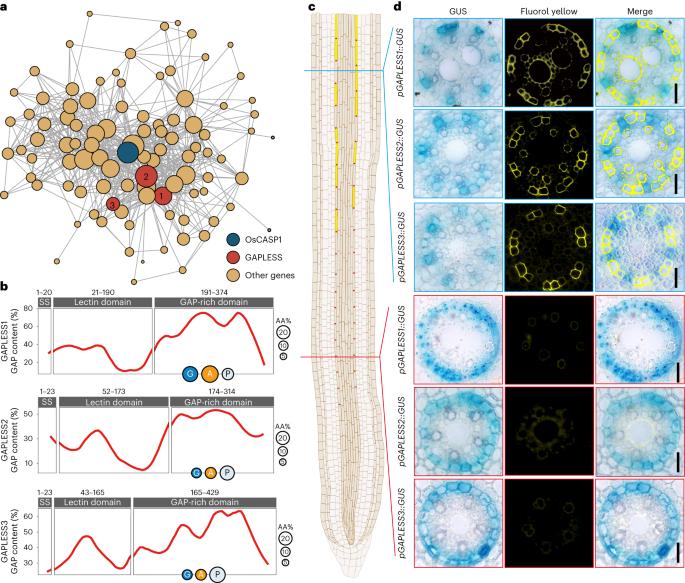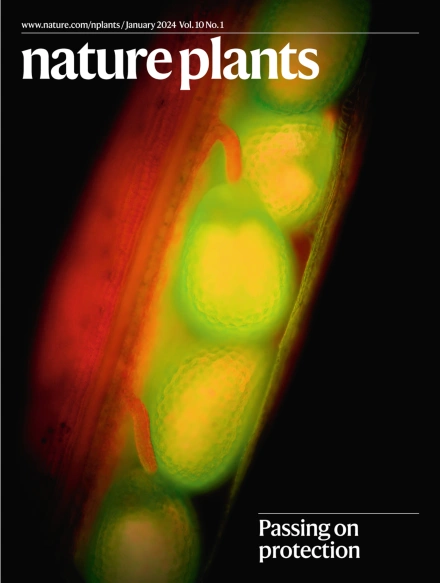A new family of proteins is required for tethering of Casparian strip membrane domain and nutrient homoeostasis in rice
IF 13.6
1区 生物学
Q1 PLANT SCIENCES
引用次数: 0
Abstract
Cell–cell junctions are essential for multicellular organisms to maintain nutrient homoeostasis. A plant-type tight junction, the Casparian strip (CS)–Casparian strip membrane domain (CSD) that seals the paracellular space between adjacent endodermal cells, has been known for more than one hundred years. However, the molecular basis of this structure remains unknown. Here we report that a new family of proteins containing a glycine/alanine/proline-rich domain, a lectin domain and a secretory signal peptide (GAPLESS) mediates tethering of the plasma membrane to the CS in rice. The GAPLESS proteins are specifically localized in the CS of root endodermal cells, and loss of their functions results in a disabled cell–cell junction and disrupted nutrient homoeostasis. The GAPLESS protein forms a tight complex with OsCASP1 in the plasma membrane, thereby mediating the CS–CSD junction. This study provides valuable insights into the junctional complex of plant endodermal cells, shedding light on our understanding of nutrient homoeostasis in crops and the cell junctions of eukaryotes. This study reports a new family of proteins localized in the Casparian strip that mediate the junction of plasma membrane and Casparian strip for maintaining nutrient homoeostasis in rice.

水稻Casparian条带膜结构域的系留和营养均衡需要一个新的蛋白质家族。
细胞-细胞连接对多细胞生物维持营养均衡至关重要。一种植物型紧密连接,即封闭相邻内胚层细胞之间细胞旁空间的卡斯帕林带(CS)-卡斯帕林条膜结构域(CSD),已经存在了一百多年。然而,这种结构的分子基础仍然未知。在这里,我们报道了一个新的蛋白质家族,包含富含甘氨酸/丙氨酸/脯氨酸的结构域、凝集素结构域和分泌信号肽(GAPLESS),介导水稻质膜与CS的结合。GAPLESS蛋白特异性定位于根内胚层细胞的CS中,其功能的丧失导致细胞-细胞连接失效和营养均衡性破坏。GAPLESS蛋白在质膜中与OsCASP1形成紧密的复合物,从而介导CS-CSD连接。这项研究为植物内胚层细胞的连接复合体提供了有价值的见解,为我们理解作物中的营养均衡和真核生物的细胞连接提供了线索。
本文章由计算机程序翻译,如有差异,请以英文原文为准。
求助全文
约1分钟内获得全文
求助全文
来源期刊

Nature Plants
PLANT SCIENCES-
CiteScore
25.30
自引率
2.20%
发文量
196
期刊介绍:
Nature Plants is an online-only, monthly journal publishing the best research on plants — from their evolution, development, metabolism and environmental interactions to their societal significance.
 求助内容:
求助内容: 应助结果提醒方式:
应助结果提醒方式:


